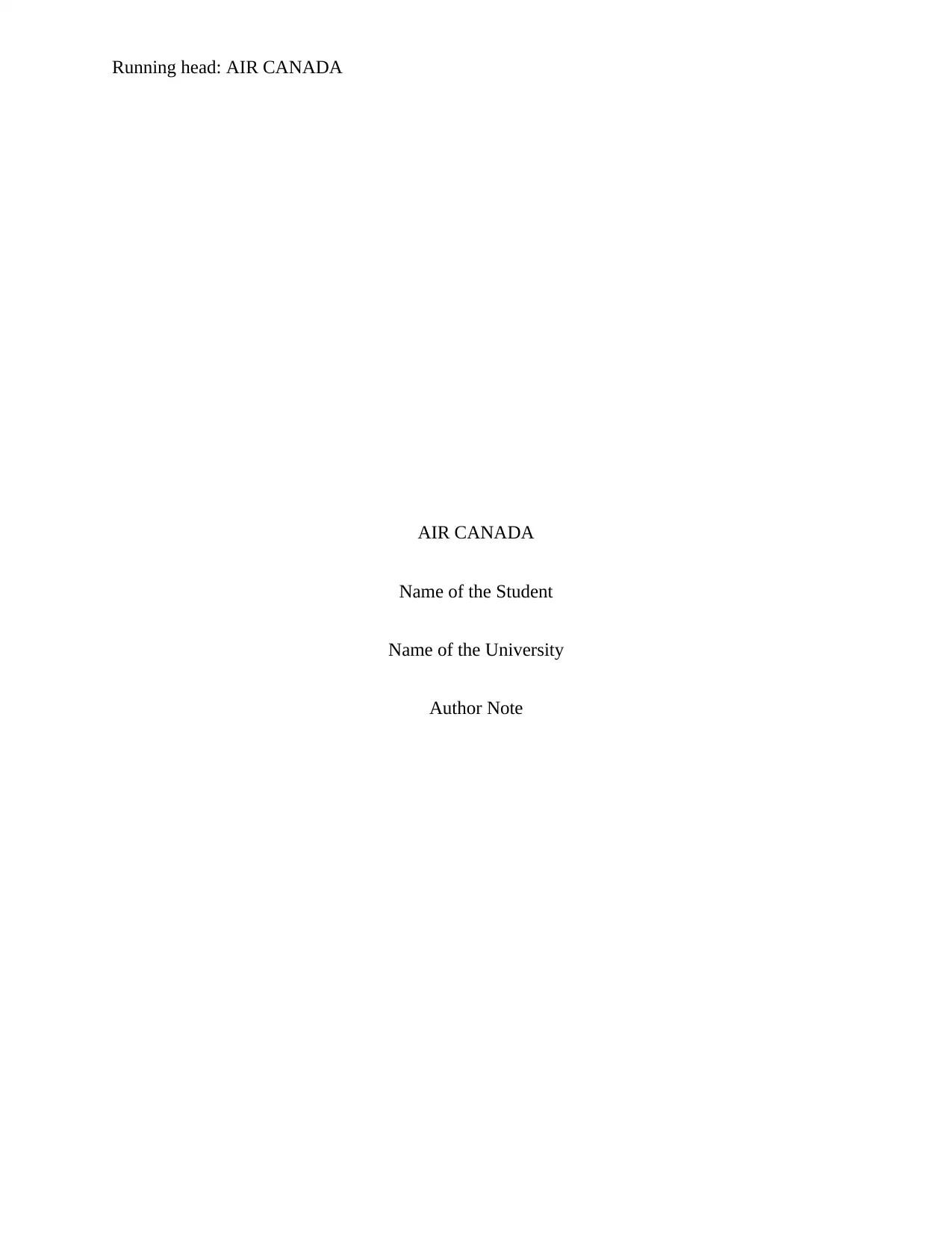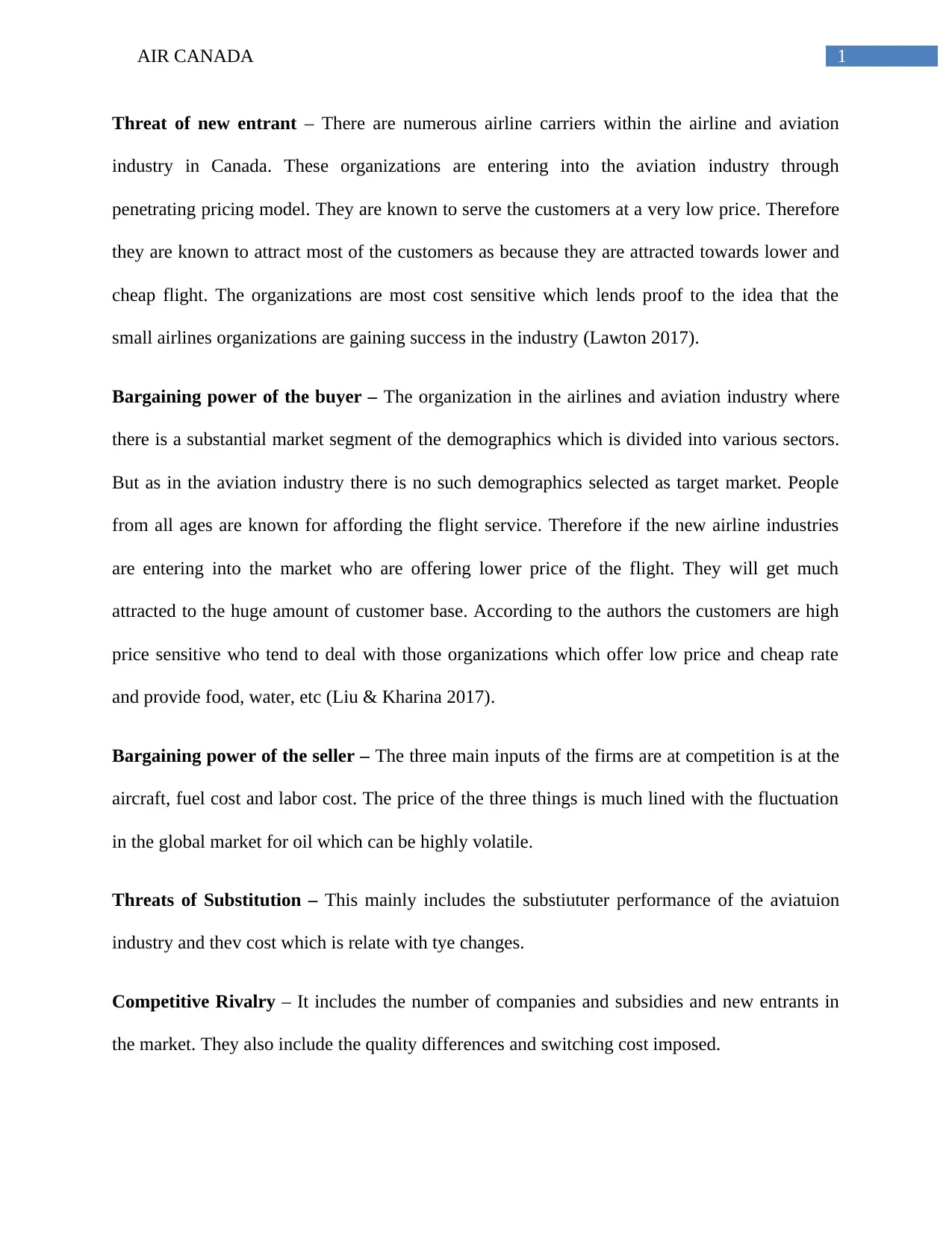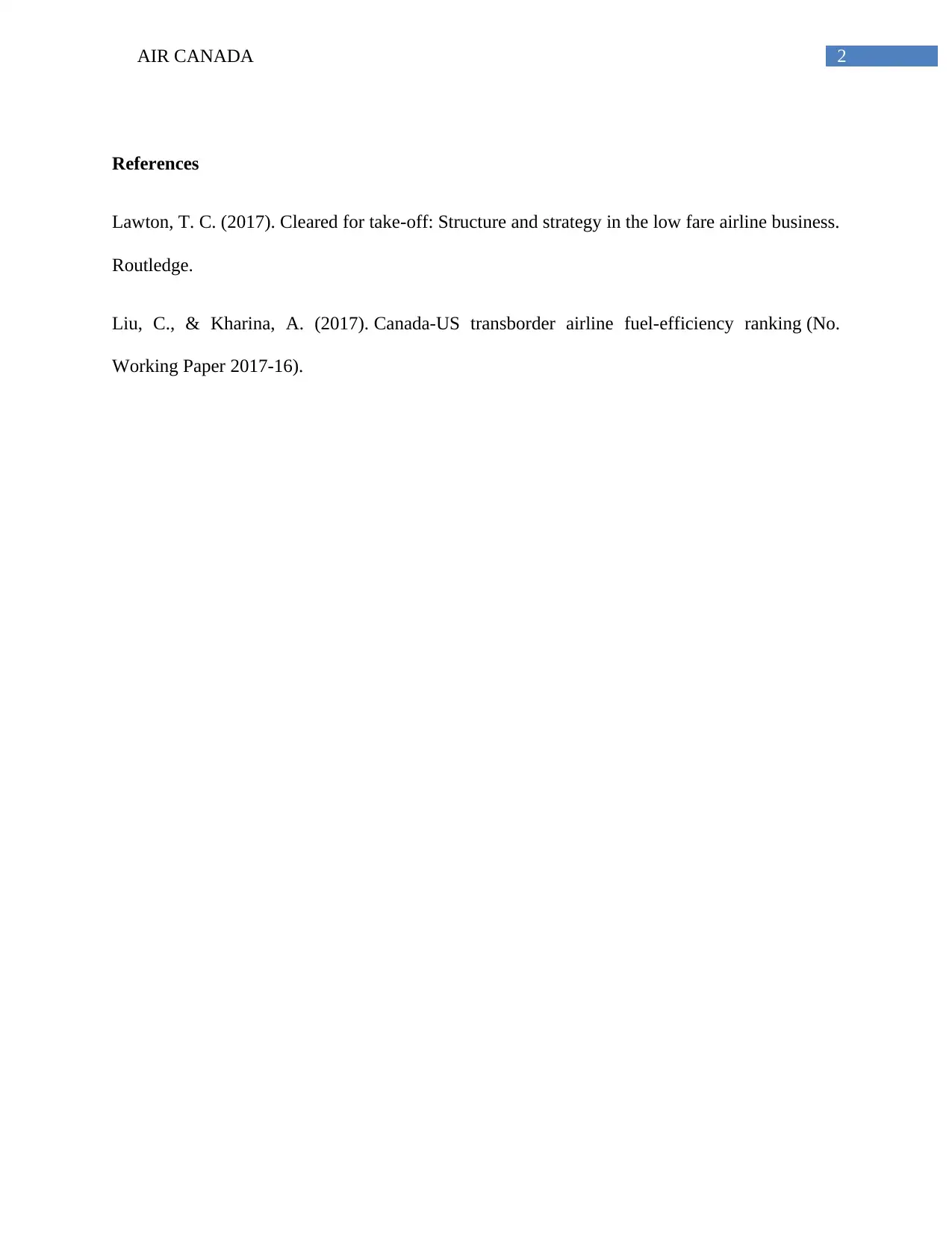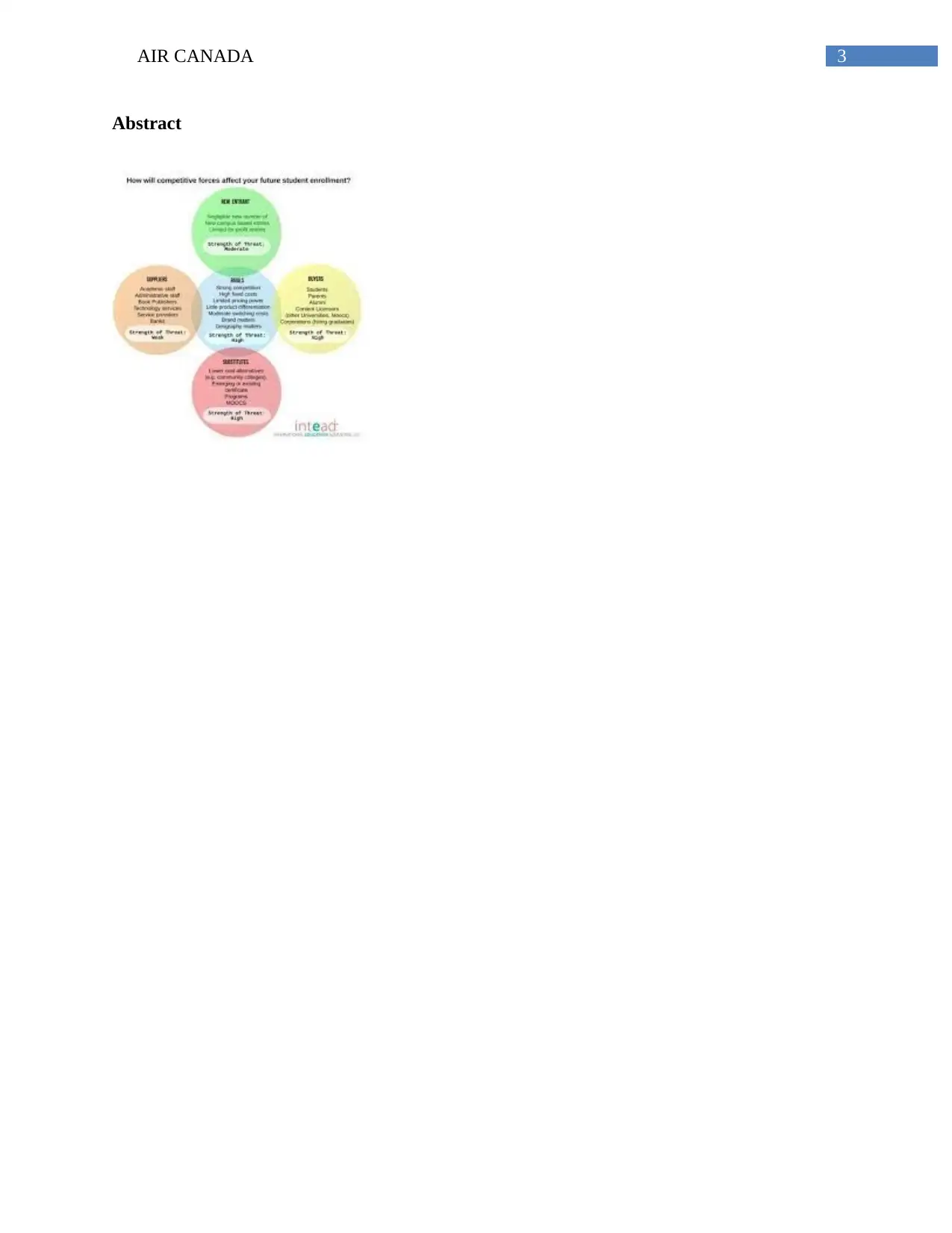Air Canada: Analysis of Threats and Opportunities in the Market
VerifiedAdded on 2022/10/04
|4
|400
|21
Report
AI Summary
This report analyzes the competitive threats faced by Air Canada within the airline industry. It examines factors such as the threat of new entrants, the bargaining power of buyers, and the bargaining power of sellers. The report highlights the impact of low-cost airlines and price sensitivity among customers. It also discusses the role of fuel and labor costs, and the potential for substitution. The analysis includes a review of competitive rivalry, including the number of competitors and their strategies. The report uses academic sources to support its findings and provide context to the analysis of Air Canada's strategic challenges. This report is a valuable resource for understanding the complexities of the aviation market and the challenges faced by major airlines.
1 out of 4










![[object Object]](/_next/static/media/star-bottom.7253800d.svg)